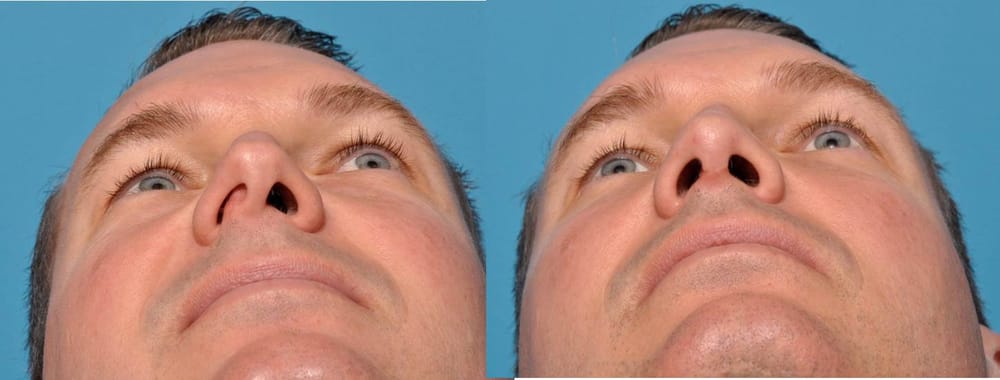A deviated septum is an ailment of nasal septum in which the bone and cartilage become crooked or displaced to one side. Making one passage smaller, the nasal septum displacement makes it difficult to breathe. The severe imbalances due to size of nasal passages cause significantly problems in breathing and require treatment. As is known from the estimates, 80% people don’t have some kind of misalignment to their nasal septum.
Causes Of Deviated Septum
The deviated septum may be caused due to a condition that may be present at the time of birth. It can also be caused due to some injury or trauma to the nose. The trauma to the nose most commonly happens during contact sports, active play or roughhousing, or automobile accidents.
Signs & Symptoms Of Deviated Septum

Nasal congestion is the most common symptom of deviated septum. Few other common symptoms include difficulty breathing and one side of nose displaced and congested than other.
Other signs and symptoms include:
-
Frequent nosebleeds
-
Facial pain
-
Recurrent or repeated sinus infections
-
Postnasal drip
-
Headache
-
Loud breathing and snoring during sleep
-
Sleep apnea (serious condition in which a person stops breathing while asleep)
Treatment To Relieve Deviated Septum
Medications like antihistamines, decongestants and nasal steroid sprays can help in relieving the symptoms of deviated septum. If medicine doesn’t help, a surgical procedure called ‘septoplasty’ may be required in order to repair the crooked septum and improve breathing.
Septoplasty & Its Risk Factors

In septoplasty, a surgeon works through the inside of nose and makes a small cut in septum and then removes the excess bone or cartilage to balance the nasal passage. In certain cases, it is also combined with rhinoplasty or nose job for improving nose’s appearance and this process is called septorhinoplasty. Sinus surgery may also be combined with sinus surgery.
Before the surgery, a local or general anaesthesia is often given. And the surgery takes about one to one and a half hour. Usually, the patient can go home after 3 hours. For stabilizing the septum, soft packing material or internal splints may be put inside the nose.
It is recommended to get the surgery done after the age of 15, when the nose stops growing. The latest procedures that use balloon septoplasty technique make you avoid actual surgery.
Some rare possible risks of septoplasty and/or rhinoplasty include:
-
Infection
-
Hole (perforation) of the septum
-
Losing the ability to smell
-
Bleeding
If you have nasal symptoms and think that it may be due to a deviated septum, it’s better to make an appointment with an ear, nose and throat doctor, or ENT. That’s because, you may have these symptoms due to some other reasons or ailment, including chronic sinusitis or nasal allergies. So just make sure that you go through the right diagnosis and get the right treatment done.
Image Source:
1) menshealth
2) yelpcdn

